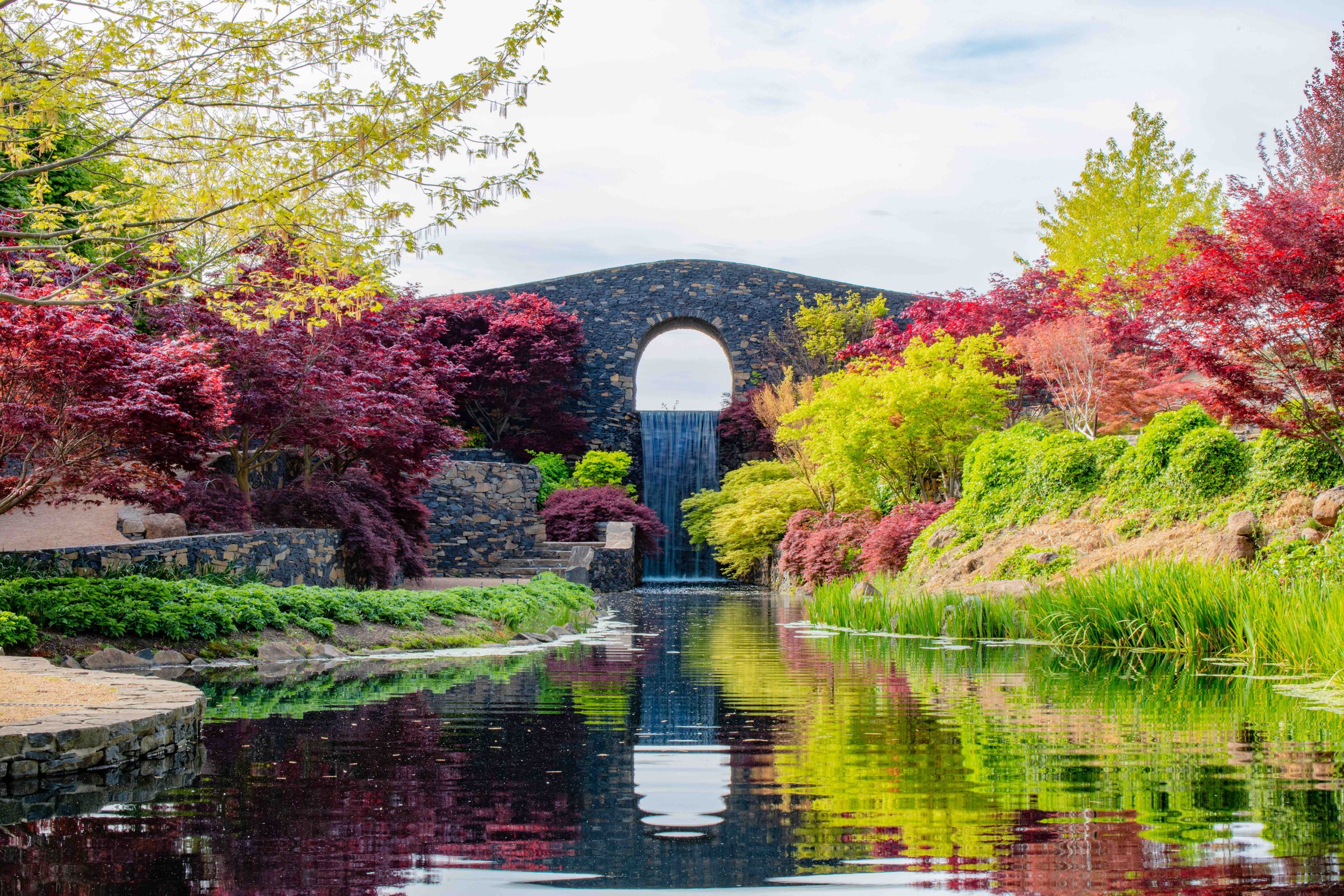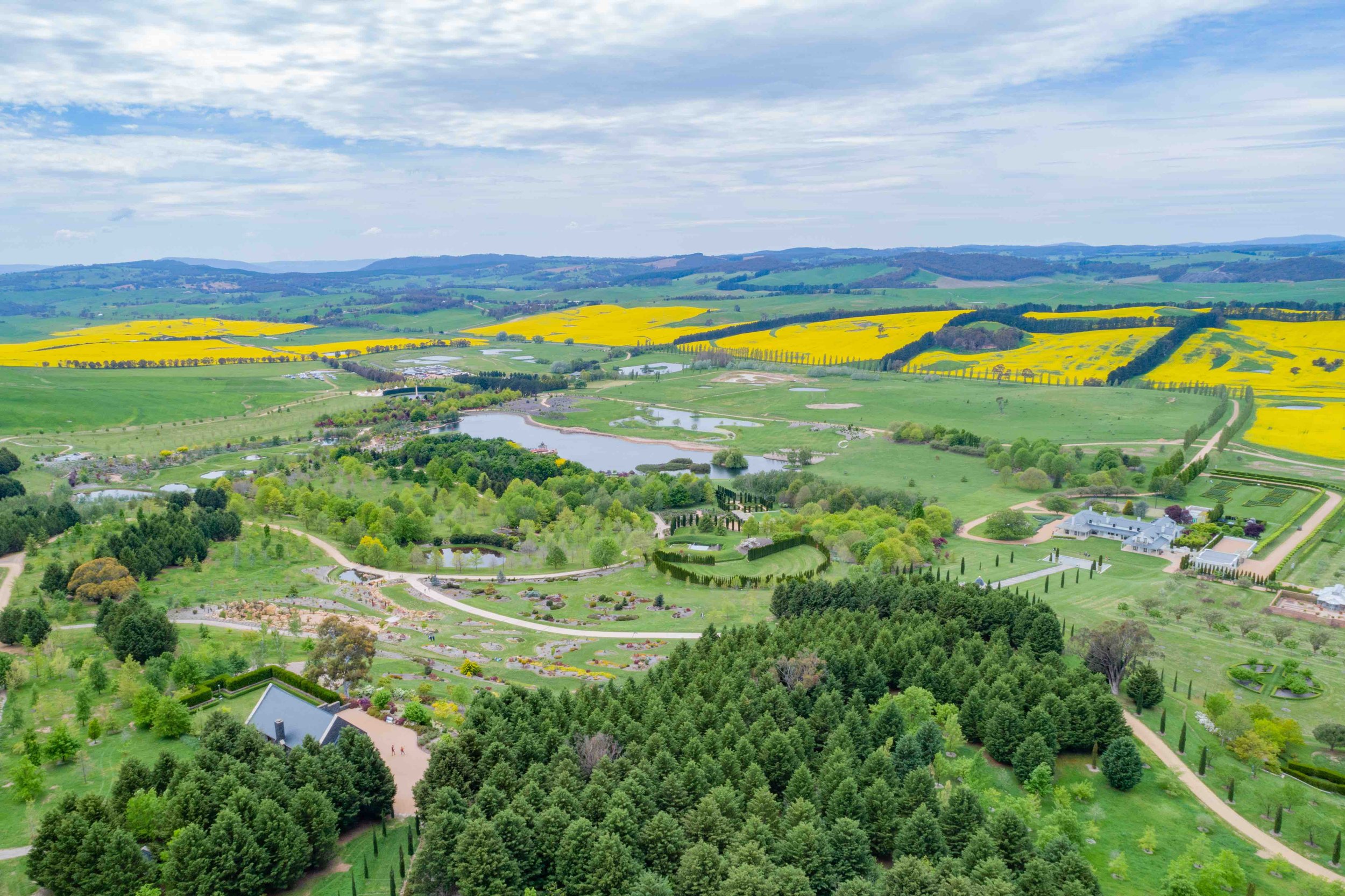The long-term vision of the Hawkins Family is that Mayfield Garden will be enjoyed by the local community as well as visitors from throughout Australia and around the world for many generations to come.
Mayfield was acquired in 1984 as a sheep farm, but the heart of the property has gradually transformed – with the help of talented local landscapers and tradespeople – from bare paddocks into one of the largest, privately-owned cool climate gardens in the world.
Mayfield Garden had been a 2,100-acre working farm for many generations when it was acquired by the Hawkins Family in 1984.
The farm subsequently grew through further acquisition to 5,000 acres - 160 acres of which are now dedicated to the horticultural component of the property, while the Hawkins family continues to farm the remaining land.
Originally acquired and developed as a private family retreat, Mayfield has been gradually opening to the public since 2008, when the family first opened the garden gates for a one-day charity event.
The response and demand from the visiting public has continued to grow to such an extent that the 15-hecatare garden is now open 363 days year, whilst the 50-hectare private family estate opens for three to four weeks each season.
The garden is supported by a restaurant that serves breakfast and lunch each day and continues to build its reputation as a leading food destination in the NSW Central Tablelands.
Whilst the Hawkins family originally had no plans to establish a tourism attraction, it is proud of the fact that Mayfield has grown into one of Australia’s most significant horticultural destinations and attracts many thousands of visitors each year, which has helped build a local tourism economy that supports many families and businesses in the area.
Mayfield alone employs more than 50 people in roles that range from hospitality and horticulture to marketing and maintenance.
Historical Timeline
The ongoing design and development of the garden has never been part of a broad sequential plan, which explains the long-term unfurling of features as ideas were developed and acted upon.
Design of the garden has largely remained the responsibility of the family, led by patriarch Garrick Hawkins, with the support of many local tradespeople and the broader horticultural industry.
The lengthy timeline not only emphasises the family’s dedication to building a world-class garden attraction, but it also highlights the breadth and variety of features that make up what is now a unique and significant horticultural destination.
1984 Acquisition of Mayfield Farm by the Hawkins Family
1987 Development of main lake
1995 Chinese Pagoda (Restored 2016)
1996 Croquet Lawn is sown
1996 Sunken Garden is established
2000 Major renovations and additions to main family home are completed
2000 Completion of 80-metre cascade and temple adjacent to main house
2002 Japanese Garden installed in a private space attached to the family home
2002 Kitchen Garden and Glasshouse completed
2003 Orchard and Nuttery planted
2004 The ever-popular box hedge maze is completed
2004 Parterre lawn completed
2004 Building of Aviary completed
2006 Amphitheatre unveiled - a masterclass in earthmoving
2006 Obelisk constructed in situ
2008 General public see Mayfield for the first time as the garden is occasionally opened for charitable events
2010 Family Chapel is completed in time for the marriage of the eldest of the four Hawkins children
2011 Water Garden finished
2011 The Stone Bridge - a main feature of the Water Garden - is completed after 12-months of four stonemasons working full-time
2012 Completion of Norwegian house, a private family art studio
2014 Water Garden and Café opened to public on a full-time basis
2015 Construction of the Grotto with cascading waterfall and sculpture
2017 Gallery detailing history of Mayfield is opened
2019 Valley of the Five Ponds is opened to the public
2019 The Stumpery is completed
2022 The spectacular Paul Bangay-designed Herbaceous Border explodes into Spring after two years of planting and nurturing
2024 Hawkins family makes the decision to open the full 65-hectare garden every day. Previously, only 15-hectares of the garden were open every day.







